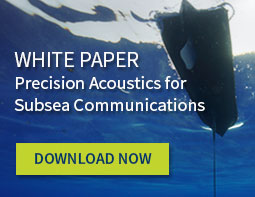Precision Acoustics for Subsea Communications
Liquid Robotics — November 15, 2017
How can you measure seafloor motion with millimeter-scale accuracy through two miles of seawater? The satellite-based GPS technique used on land doesn’t work in the ocean, so we turn to GPS-Acoustics.
When you combine GPS and precision acoustics, made possible by advances in sensor technology, the result is incredibly accurate seafloor measurements—precise enough to track tectonic plate movement.
GPS-Acoustics have been used successfully to monitor seafloor motion from research vessels, but vessels are too expensive to be a practical long-term, real-time solution. Enter unmanned systems, which change the whole cost structure of subsea communications.
One of the latest developments is the ability to precisely position a Sonardyne seafloor transponder from a Wave Glider in up to 5,000 meters of water depth. Operating at the surface, the wave and solar powered Wave Glider can hold station above the seafloor sensors for many months at a time, serving as a communications gateway to collect and transmit data in real time.
With these advances in technology, seafloor geodesy projects have sprung up around the world, all in pursuit of scientific advances that will help us crack the code on earthquake and tsunami risk, and ultimately save lives.
We explore this further in our latest white paper, where you’ll learn about:
- Four seafloor geodesy projects in progress around the Ring of Fire
- Commercial applications of GPS-Acoustics in offshore oil & gas
- How the Wave Glider enables persistent subsea communications
